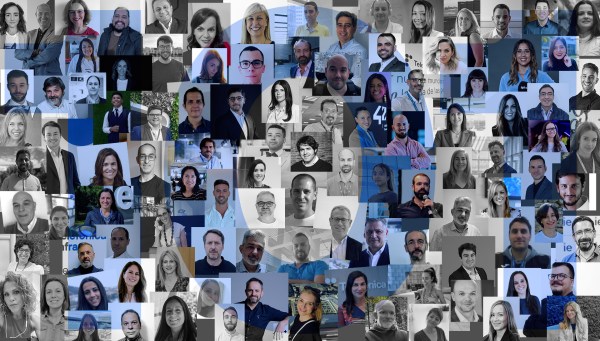Children mesmerised by endless videos, teenagers trapped in social media and absent parents behind mobile phones that never switch off. Far from bringing us together, summer often separates us.
The silent impact of “digital abuse”
Excessive screen use during the holidays not only affects leisure time, but also progressively deteriorates family life, emotional well-being and the healthy development of children and teenagers. One of the most visible consequences is the loss of real conversation spaces: meals where every member of the family is absorbed in their device, ignoring everyone else — what we know as ‘phubbing’ — and the disappearance of shared moments that used to be spent planning together, chatting or laughing. Screens replace family plans, dilute emotional connection and create a feeling of silent isolation, even when we are physically close.
On the other hand, the phenomenon of “vamping” —using devices late into the night— has become a regular routine in many homes. This interferes with rest, but also multiplies the negative effects of excessive screen use, causing irritability, fatigue and concentration problems, which in many cases lead to poor school performance. At the same time, this hyperconnectivity encourages a sedentary lifestyle: hours that were once spent playing, going out or being active are now spent in front of a screen, directly affecting physical health, increasing the risk of childhood obesity and reducing the vital energy needed for balanced development.
Together, these habits not only impact physical and emotional health, but also erode the quality of family bonds, creating a relationship model where technology replaces presence, attention and mutual care.
Such is the case that the Spanish Paediatric Association (AEP) has revised its recommendations for screen use according to age, recommending:
- 0 screens before the age of 2.
- From 2 to 5 years old, a maximum of 1 hour per day with supervision.
- From 6 to 12 years old, between 1 and 2 hours, with no screens before bedtime.
- For teenagers: balanced use, with rules and times to disconnect.
And remember something essential: the example we set as parents is crucial for screen use, which is why we want to share with you, our readers, a plan, an agreement that can be drawn up in 6 simple steps, where everyone in the family becomes aware of how we are using screens and we reach agreements on times with and without devices, family activities, and the distribution of family tasks and responsibilities:
The Family Digital Summer Plan
- Family awareness: Sit down together and analyse how many devices there are, who uses them, how much and for what. You can use apps such as Digital Wellbeing (Android) or Screen Time (iOS/Mac) to see real data. Reflecting as a family is the first step towards change.
- Agree on adjustments and support tools
- Agree on what to change: reduce social media, avoid screens at mealtimes, turn off devices before bedtime, etc. Use parental control apps such as Family Link or Qustodio, which allow you to manage time and content. These tools are very important for managing good use among young children and teenagers and can be phased out gradually, depending on the child’s maturity and responsibility.
- Design a balanced schedule
- Alternate digital time with varied, non-technological activities: board games, sports, reading, outings or creative activities. Take advantage of this time to set up a family calendar that includes shared household chores and daily responsibilities (setting the table, watering the plants, taking out the rubbish, helping with the shopping, etc.). Adjusting these tasks to the age of each child is not only useful, but also educational: it promotes their sense of belonging to the family group, reinforces their self-concept and boosts their self-esteem by making them feel capable, useful and valued. Designing this schedule together (even drawing it or printing it out in colour) helps everyone to commit to it and see it as a shared plan, not an imposition.
- Set up a “digital parking space”
- Choose a physical place (a box, shelf, drawer) where devices are left during screen-free times, especially at night. Sleeping without a mobile phone improves rest and avoids unnecessary problems.
- Review the plan together every week
- Take a few minutes to assess what has been achieved, what has been most difficult and what can be adjusted. The important thing is to grow as a team.
- Celebrate achievements with shared rewards
- A dinner at a special place, a family film, an outing or a charitable activity. The aim is to strengthen what unites us.
We can use technology to help us “reconnect” by making more effective and efficient use of it: ChatGPT and personalised GPTs:
Although it may seem contradictory, technology, when used well, can help us disconnect from its excessive use. Artificial intelligence tools such as ChatGPT can act as positive assistants in family digital education.
Did you know that you can create your own personalised GPT without knowing how to program? It is a version of ChatGPT designed by you, with the features you want: digital health routines, reflection questions, leisure suggestions, recipes, game ideas, etc.
What can a personalised family artificial intelligence do?
- Remind you to disconnect: ‘Have you gone for a walk today without your mobile phone?’
- Ask self-coaching questions: ‘Did you feel better or worse after spending 3 hours on TikTok?’
- Suggest challenges or activities: ‘Organise a screen-free dinner with a quiz.’
- Create a weekly plan with ideas to share with the family.
How do you create one?
From the ChatGPT website, go to ‘Explore GPTs’ and select ‘Create a GPT’. The assistant will guide you step by step. Here is an explanatory video in Spanish to learn how to do it.
AI does not replace family bonds, but it can be a friendly and creative guide to redirect habits, encourage reflection and plan together.
Ultimately, summer is a great opportunity to reset as a family. And it’s not enough to turn off your mobile phones to spark conversations, reactivate shared games, and rediscover unfiltered laughter and eye contact.
‘Educating children about the responsible use of technology is a family matter that is not about prohibiting, but about accompanying and learning together.’










